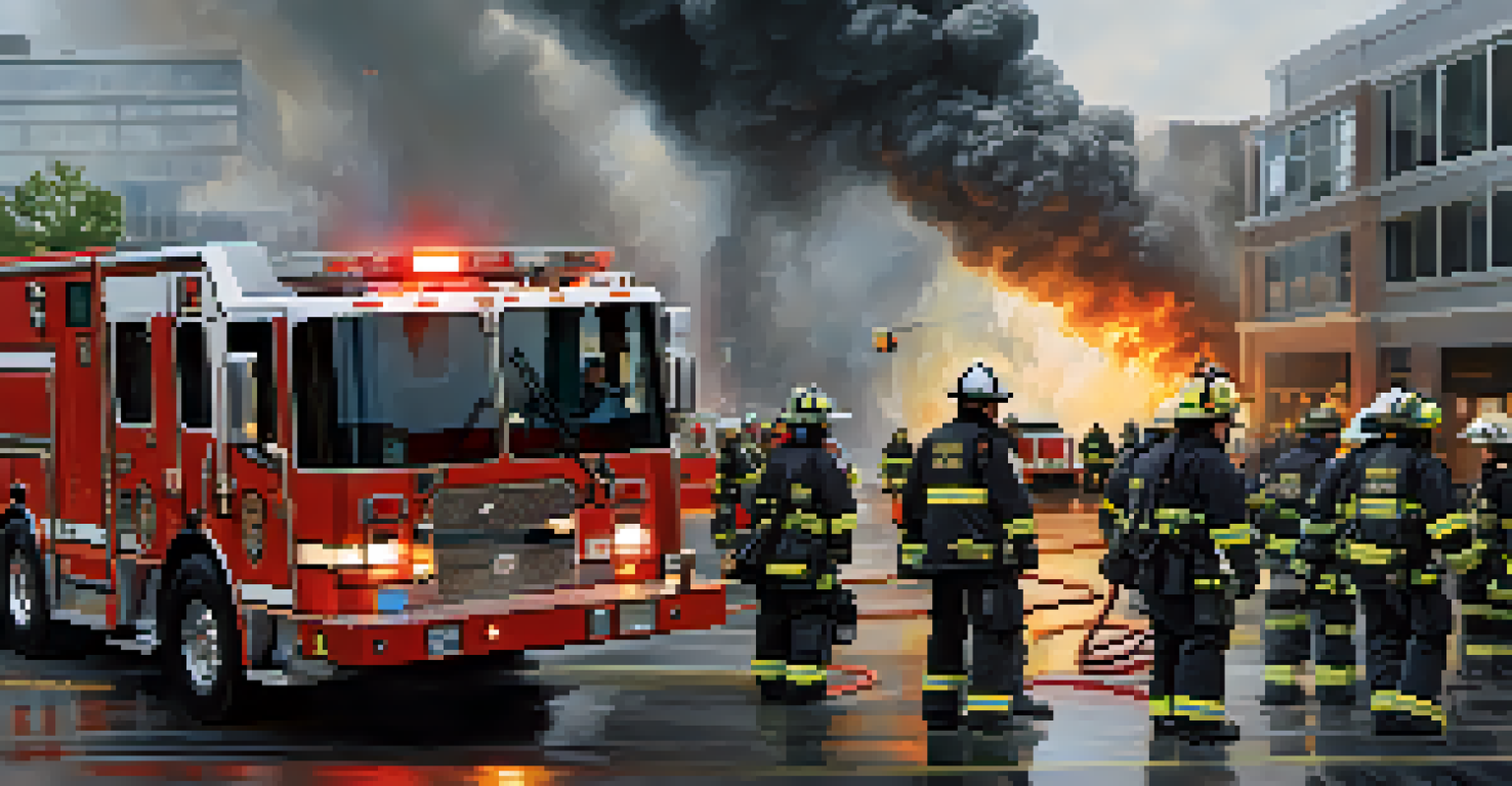The Role of New York City Agencies in Disaster Preparedness

Understanding the Importance of Disaster Preparedness
Disaster preparedness is crucial for cities like New York, which face various threats such as hurricanes, floods, and terrorist attacks. By preparing in advance, agencies can minimize damage and save lives when disaster strikes. The city's unique infrastructure and dense population make it imperative to have effective plans in place.
By failing to prepare, you are preparing to fail.
Agencies work collaboratively to develop comprehensive strategies that include risk assessments, emergency response plans, and public training initiatives. For instance, the NYC Emergency Management Department coordinates these efforts to ensure all agencies are on the same page. This kind of teamwork can make a significant difference during a crisis.
Additionally, being prepared isn't just about having a plan; it’s about community involvement. When residents know what to do in an emergency, they can help themselves and each other, easing the burden on city resources and first responders.
Key NYC Agencies Involved in Disaster Preparedness
Several agencies play pivotal roles in New York City's disaster preparedness landscape. The NYC Emergency Management Department is the backbone, coordinating efforts across various sectors. Other key players include the Fire Department, Police Department, and Department of Health, each bringing unique expertise to the table.

Each agency has specific responsibilities, such as the Fire Department’s focus on firefighting and rescue operations, while the Department of Health deals with public health emergencies. This specialization allows for a more streamlined response during disasters, ensuring that all bases are covered.
Community Involvement is Key
Engaging residents in disaster preparedness empowers them to take charge of their safety and support each other during emergencies.
Moreover, collaboration between these agencies is vital. Regular drills and simulations help build rapport and improve communication, which are critical in a real-life emergency situation. This interconnectedness enhances the city's overall resilience.
Community Engagement in Disaster Preparedness
Community engagement is a cornerstone of effective disaster preparedness in NYC. Agencies actively involve residents through workshops, training sessions, and public awareness campaigns. This approach empowers individuals to take charge of their safety during emergencies.
An ounce of prevention is worth a pound of cure.
For instance, the NYC Ready initiative encourages residents to create personal emergency plans and build disaster supply kits. By equipping themselves with knowledge and resources, community members become vital assets during crises, helping to alleviate the pressure on first responders.
Engagement also fosters a sense of belonging and responsibility. When communities come together to prepare, they strengthen their bonds, making it easier to support one another when disaster strikes.
The Role of Technology in Disaster Preparedness
Technology plays an increasingly important role in disaster preparedness in New York City. From advanced weather forecasting systems to mobile apps that provide real-time alerts, technology enhances the city's ability to respond effectively. These tools not only help agencies monitor potential threats but also keep residents informed.
For instance, the Notify NYC system sends alerts about emergencies, allowing residents to stay updated on critical situations. This immediate access to information can be life-saving, making it easier for people to make informed decisions during a crisis.
Collaboration Among Agencies
Effective disaster response in NYC relies on the coordinated efforts of multiple agencies, each specializing in different aspects of emergency management.
Moreover, social media platforms are utilized for quick communication and outreach. Agencies can share safety tips and updates, ensuring that vital information reaches as many people as possible, especially during emergencies when traditional communication lines may be disrupted.
Training and Drills for First Responders
Training and drills are essential components of disaster preparedness for NYC agencies. Regular exercises simulate various disaster scenarios, allowing first responders to practice their skills and coordination. This hands-on experience is invaluable, as it helps identify potential gaps in response plans.
For example, the city conducts large-scale drills that involve multiple agencies and community partners. These exercises not only prepare responders but also test communication systems and resource allocation, ensuring that everyone knows their role in a real situation.
Furthermore, continuous training fosters a culture of readiness among responders. By staying updated on best practices and new technologies, they can adapt to evolving threats and provide the most effective assistance to the community.
Public Awareness Campaigns and Education
Public awareness campaigns are vital in ensuring that New Yorkers are prepared for disasters. NYC agencies launch various initiatives to educate residents about potential risks and the steps they can take to protect themselves. These campaigns often use relatable scenarios to emphasize the importance of preparedness.
For instance, campaigns may highlight the need for emergency kits and communication plans, making the information accessible and actionable. By breaking down complex ideas into simple steps, residents are more likely to engage and take appropriate actions.
Technology Enhances Preparedness
Advanced technology, such as real-time alert systems and social media, significantly improves New York City's ability to respond to disasters.
Moreover, education extends to schools and community organizations, creating a culture of preparedness from a young age. When children learn about disaster readiness, they carry that knowledge home, influencing their families and ultimately strengthening community resilience.
Evaluating and Improving Disaster Response Plans
Ongoing evaluation of disaster response plans is crucial for NYC agencies to stay effective. After each disaster or drill, agencies analyze their performance to identify strengths and weaknesses. This continuous improvement cycle ensures that strategies evolve as new challenges and technologies emerge.
For instance, after Hurricane Sandy, NYC agencies reassessed their flood response protocols and invested in infrastructure improvements. These changes not only addressed the immediate concerns but also prepared the city for future storms, demonstrating a proactive approach to disaster management.

Additionally, community feedback is essential in this evaluation process. By listening to residents’ experiences and suggestions, agencies can refine their plans to better meet the needs of the population, ultimately leading to a more resilient city.